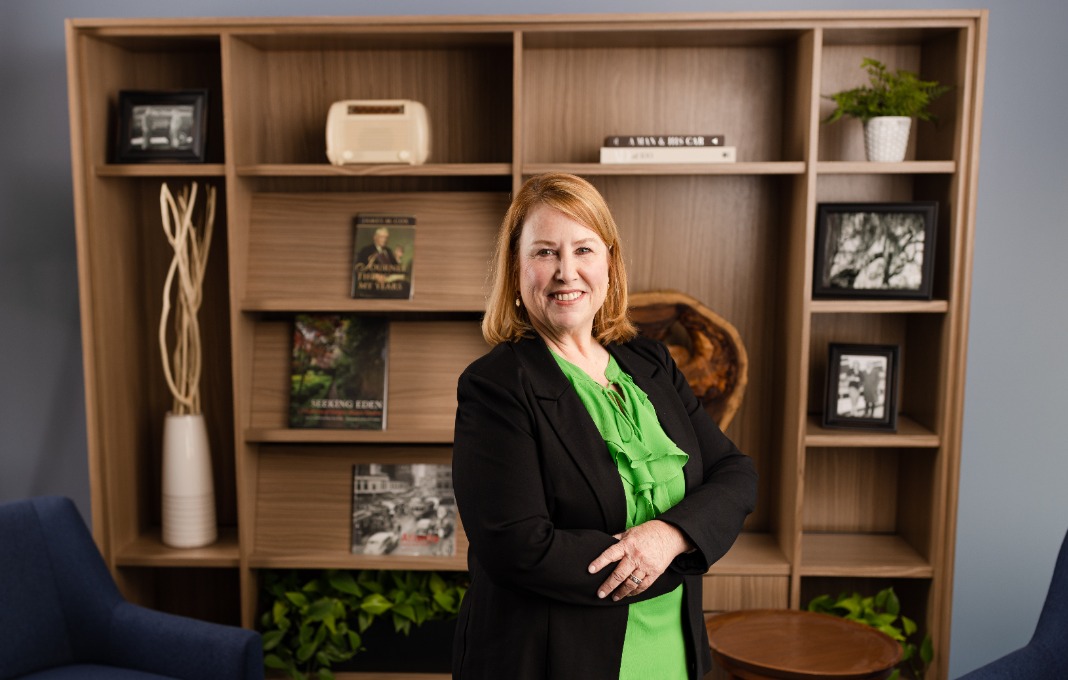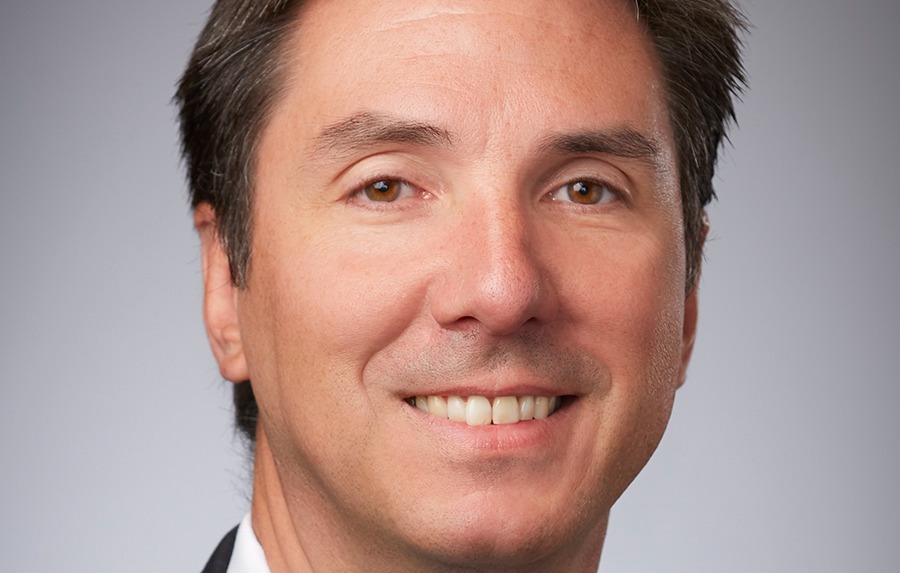Karen Bennett has always been one to stretch herself professionally into some new role—and then figure out how to meet expectations that were new for her and even for the human resources field in general.
These days, as chief people officer of Cox Enterprises, Bennett has been refining her approach to one of the crucial characteristics of C-Suite leaders in the post-pandemic era: flexibility. Cox is a $23 billion enterprise with 50,000 employees worldwide, and perhaps the biggest demand she faces in guiding human capital strategy is for flexibility in dealing with the needs and capabilities of a workforce that is about half blue-collar, half white-collar. And in creating and protecting a meaningful culture that is caught between remote and in-person work.
Bennett has even applied flexibility in new ways such as Cox Gigs, a system of short-term internal, work-project assignments that takes salaried employees out of their regular roles for five or six hours a week. Gigs provides Band-Aids for crucial needs at the same time it exposes careerists to new possibilities for internal development that help satisfy and retain them in a talent market that remains tight.
“Leaders tell us they would have had to go outside and hire consulting resources or cancel projects without Gigs,” Bennett tells StrategicCHRO360. “That gets the program repeat ‘customers’ and repeat success. And employees say they have benefited from understanding how different departments work. They have been able to build their networks, and gain skills and exposure.”
Innovating along the way has become how Bennett approaches things at the apex of a human capital career that began at Turner Broadcasting System, where she rose to become senior vice president of HR, and continued at YP (formerly AT&T Ad Solutions), where Bennett was CHRO.
“I’ve raised my hand for a stretch assignment every time,” says the native Georgian and recipient of bachelor’s and MBA degrees from the University of Georgia. “That started in the benefits area for me, which naturally then led to understanding employee compensation. That naturally led to [expertise] in the variety of ways in which you can compensate a person. I was always, ‘I’d like to learn that and take that on.’
“I also did additional stretch assignments because I was truly interested in the work and wanted to get into new or emerging areas of HR. I would go sign up and figure it out for what it means for our company, or fill in for someone else’s work. It was curiosity: wanting to understand the business.”
Beyond skills training
Thus Bennett’s roles have grown along with the expectations and purview of the human capital management profession. “This space has evolved from personnel management, about hiring and firing and benefits, into areas of HR technology and data analytics, and even different levels of employee development,” she says. “And 25 years ago, it was just about skills training; now it’s about developing the entire leader beyond the skills demanded by the daily job.”
In 2015, Bennett jumped to Cox, a giant family-owned communications outfit in Atlanta, where she has been CHRO for Cox Media Group and EVP and chief people officer for Cox Communications. She ascended to her current role in early 2023.
Her career at Cox has highlighted the benefits of working for a large but privately held, even family-owned company. “We put employees first in the decisions we make,” Bennett says. “The decisions we make are in the best interests of the workforce and the business collectively, not to influence shareholder price or sentiment or even for their budgetary impacts.”
The diversity of businesses within Cox—including a vast cable-TV enterprise as well as a Cox Automotive brand that includes Autotrader and Kelley Blue Book—means “people can have a multitude of career experiences and never leave Cox,” she says.
Yet the internal diversity of workforce experiences also has meant challenges for Bennett and the company. During Covid, for instance, about 45 percent of Cox’s workforce faced continued demands for in-person interaction with the public, for installing cable and other purposes.
“We were an essential service,” Bennett says, “but we couldn’t have [employees] crossing the threshold of people’s homes. Technology made it easier for us: things as rudimentary as passing cameras through a person’s door threshold” to facilitate installations. Over time, that got more sophisticated. But it was always about safety and about reminding the rest of our workforce—who packed up computers and went home at night—that it was the front lines who were carrying the company.”
The pandemic, of course, also created new expectations among the 55 percent of Cox’s workforce who could, theoretically at least, work remotely. Even into 2023, Bennett, “it was a marketplace where, even with the most [dogged] and assertive of recruiters, the first thing [job candidates] would ask was, ‘Can I work remotely, and does that mean from anywhere?’”
Such demands have been tempered somewhat lately by the fact that the labor market overall has loosened up a bit while many employers’ demands for workers to be in the office at least part of the time have firmed. Coming out the other side, Bennett has helped create a flexible but fair approach.
“We’ve told our leaders they just need to make smart decisions about this,” she says. “Remember that 45 percent of our workforce can never work from home. [So] managers are accountable for understanding where the work is best performed. Certain things are done better face-to-face and person-to-person. Or in a room collectively.”
That approach, Bennett says, “has resonated with people.” And it has forced leaders to come up with creative solutions. For example, in some parts of the country where parking their Cox trucks at the company facility overnight would require extra driving, Cox Communications supervisors had allowed workers to park their trucks at home overnight.
In retail stores, Cox is accommodating more flexible shifts for work days and work hours. And salespeople, Bennett says, “have authority to make the schedules that they need.”
‘Career jungle gym’
Three years ago, Bennett began implementing a different approach to advancement at Cox that reflected new realities of the labor market. “Before, divisions operated autonomously and didn’t share the same career framework,” she explains. “So we changed the ‘career ladder’ to the ‘career jungle gym.’ So, in locations where we have a high density of employees working together for all divisions, people are growing their careers by moving across divisions with the company.
“We’re sharing information and working with employees to ask, ‘What are the jobs around you that use your same skills? Here are some promotional opportunities.’ The first thing is building that framework, then being transparent with it, and considering internal applicants for new roles first. Take that extra moment internally for [managers] to share what they have for opportunities, or what kind of people they’re lacking.”
Cox also offers an array of online-learning programs that end up certifying participants in certain skills, such as specific software programs. Cox Gigs is another way of “experimenting and being creative and innovative with new ways of development,” Bennett says.
Launched in 2020 as a pilot, Gigs lately has been expanded to eligibility for all salaried workers; they can go to an internal portal and explore all the needs and opportunities for the assignments that can stretch from a few weeks to a few months.
“People don’t leave their day jobs, but they get leaders’ approvals up front to take these stretch tasks,” Bennett says. It may be running a focus group. Because it’s salaried people and they’re on the clock, it’s cost-neutral.” About 60 Cox employees have participated in Gigs so far, with younger careerists being the most interested.
Gigs is the kind of opportunity being demanded by Generation Z workers, but Bennett finds the youngest workforce cohort “in the office more frequently” than might be imagined. “They recognize or buy into the value of being seen and having a good collective network,” she says. “And they are more daring about going to anyone and saying, ‘Have a cup of coffee with me’ so they can learn.”
Navigating DEI has come to the forefront for Bennett as for many CHROs these days. Cox emphasizes inclusiveness, she says, emphasizing practices that encourage it. “For example, every time we have an opening at a managerial level or above, we ensure that we have not only a diverse slate of qualified candidates but that we have a diverse slate of interviewers as well. And we also do the interview in a panel setting so everyone is seeing the same thing at the same time.”
Even traditional boosters of corporate diversity can come in for re-examination as companies such as Cox grapple with what’s most effective and fair. “Career-development programs for women are under scrutiny because, by definition, they are ‘excluding’ versus including,” Bennett says. “But can we decide that a man can’t join a female-leadership program when, as he might be a father of three girls, frankly he could benefit from that?”








